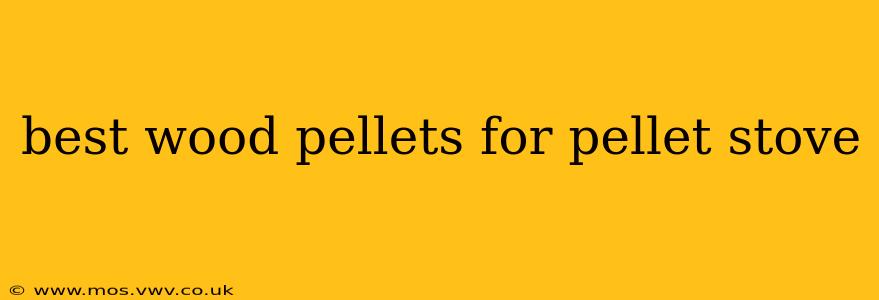Choosing the right wood pellets for your pellet stove is crucial for optimal performance, efficiency, and longevity of your appliance. The wrong pellets can lead to poor combustion, frequent cleanings, and even damage to your stove. This guide will help you navigate the world of wood pellets and find the best fuel for your needs.
What Makes a Good Pellet?
Before diving into specific brands, let's understand the key characteristics of high-quality wood pellets:
-
Hardwood vs. Softwood: Hardwood pellets generally burn hotter, longer, and cleaner than softwood pellets. They produce fewer emissions and leave less ash. However, they are typically more expensive. Softwood pellets are more readily available and often cheaper, but they may require more frequent cleaning.
-
Ash Content: Look for pellets with low ash content (generally under 1%). High ash content means more frequent cleaning of your stove's ash pan.
-
Moisture Content: Low moisture content (ideally below 10%) is essential for efficient burning. High moisture content can lead to poor combustion, increased creosote buildup, and reduced heat output.
-
Size and Shape: Pellets should be consistently sized and shaped to ensure proper feeding and combustion within your stove. Inconsistent sizing can lead to jams.
-
Certification: Look for pellets that meet standards set by organizations like the Pellet Fuels Institute (PFI). PFI certification indicates the pellets meet specific quality standards for moisture content, ash content, and other factors.
What are the most common types of wood pellets?
This question often gets asked when researching pellet stove fuel. There's not a strict categorization beyond hardwood and softwood. However, the type of hardwood used can vary, resulting in different burning characteristics. For example, pellets made from oak are generally known for their long burn times and high heat output, while maple pellets are often praised for their clean burn. The specific type of hardwood will usually be listed on the packaging.
How do I choose the right size wood pellets?
All reputable pellet stove manufacturers specify the pellet size they recommend for their models. Using the incorrect pellet size can lead to jams or inefficient combustion. Always consult your stove's owner's manual for the recommended pellet size. Do not assume all pellets are universally compatible with all pellet stoves.
What are the best brands of wood pellets?
This is a highly subjective question, as the "best" brand depends heavily on your location, individual stove, and personal preferences. However, many highly-rated brands consistently receive positive reviews for their quality and performance. It's best to consult reviews from other users in your area to determine which brands have performed well in similar climates and stove types. Remember to check for PFI certification when evaluating different brands.
Where can I buy the best wood pellets?
Wood pellets are commonly sold at home improvement stores, farm supply stores, and online retailers. You can often find local suppliers by searching online. Consider purchasing from a reputable supplier to ensure you receive high-quality pellets. Buying in bulk can sometimes save money, but make sure you have adequate storage space to prevent moisture damage.
What are the potential problems with using low-quality wood pellets?
Using low-quality pellets can result in several issues: increased creosote buildup (a fire hazard), reduced heat output, frequent jams in your stove's auger, more frequent cleaning, and ultimately, potential damage to your stove. The cost savings from cheaper pellets are often negated by the increased maintenance and potential repair costs.
By carefully considering these factors and conducting thorough research based on your specific needs and location, you can confidently select the best wood pellets to keep your pellet stove running efficiently and safely throughout the heating season. Remember to always check your stove’s manual for specific recommendations.
